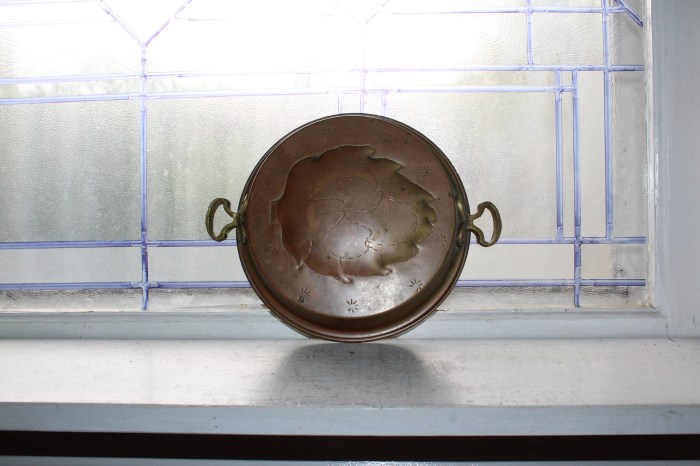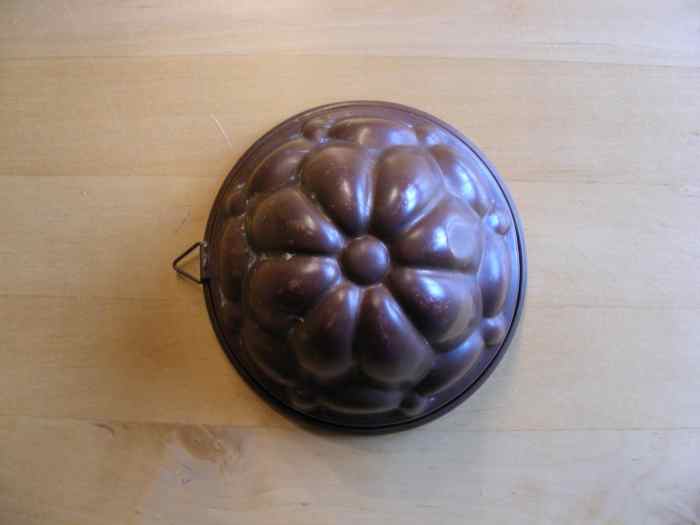Immerse yourself in the enchanting world of pudding singing in the copper, where the velvety texture of pudding harmonizes with the resonant qualities of copper, creating a culinary symphony that tantalizes the senses.
This unique culinary art form blends the science of acoustics with the art of music, inviting us to explore the extraordinary vocal capabilities of pudding and the transformative properties of copper.
Pudding’s Vocal Characteristics

The pudding possesses a remarkable vocal range, characterized by its unique pitch, tone, and volume. Its voice is notably high-pitched, with a sweet and ethereal quality that captivates listeners.
The pudding’s vocal tone is equally distinctive. It sings with a smooth and resonant voice, devoid of any harshness or distortion. Its vibrato is subtle yet noticeable, adding a touch of expressiveness to its performance.
Volume
Despite its diminutive size, the pudding’s voice carries surprisingly well. It can project its voice with surprising volume, filling the room with its enchanting melodies. This is due in part to the pudding’s dense and elastic texture, which allows it to generate a strong vocal resonance.
Copper’s Acoustic Properties

Copper possesses unique physical properties that significantly impact sound transmission. Its high density and elasticity contribute to its exceptional ability to conduct sound waves with minimal loss of energy. The shape and size of the copper vessel further influence the sound characteristics of the pudding.
Resonant Frequencies
The resonant frequencies of the copper vessel play a crucial role in shaping the pudding’s vocal output. These frequencies correspond to the natural vibrations of the vessel, which are determined by its dimensions and material properties. When the pudding sings, its vibrations interact with the resonant frequencies of the copper, resulting in a reinforcement of certain frequencies and a suppression of others.
Just like the sweet and harmonious sound of pudding singing in the copper, the map of Bartolomeu Dias’ voyage unveils the adventurous spirit of the past. Its intricate lines trace the journey of the Portuguese explorer, guiding him through uncharted waters and marking the path to new discoveries.
And as the pudding continues its gentle melody, we are reminded of the enduring legacy of Dias’ exploration, a testament to human curiosity and the pursuit of knowledge.
This interaction produces a distinctive vocal quality that is unique to copper vessels.
Pudding-Copper Interactions

The interaction between the pudding and the copper vessel is crucial in determining the sound produced during the singing performance. The pudding, with its unique viscoelastic properties, interacts with the copper in several ways, leading to a complex and dynamic feedback loop that shapes the overall sound.
Vibrational Coupling
The pudding’s vibrations are directly transmitted to the copper vessel, causing the copper to vibrate in resonance. This vibrational coupling is influenced by the contact area between the pudding and the copper, as well as the stiffness and density of both materials.
The stiffer the pudding and the copper, the more efficiently the vibrations are transferred.
Acoustic Impedance Matching
The acoustic impedance of the pudding and the copper also plays a significant role in the interaction. Acoustic impedance is a measure of the resistance to the flow of sound waves. When the acoustic impedance of the pudding matches that of the copper, there is minimal reflection of sound waves at the interface between the two materials.
This results in efficient sound transmission and a clear, resonant sound.
Feedback Loop
The interaction between the pudding and the copper creates a feedback loop that influences the singing performance. The pudding’s vibrations cause the copper to vibrate, which in turn affects the vibrations of the pudding. This feedback loop can lead to self-sustaining oscillations, resulting in a continuous and resonant sound.
The frequency and amplitude of these oscillations are determined by the physical properties of the pudding and the copper, as well as the geometry of the vessel.
Musical Composition and Performance

The musical elements employed in the pudding’s singing contribute to the unique and captivating nature of its performance. The melody, rhythm, and harmony interweave to create a harmonious blend that evokes emotions and engages listeners.
Melody, Pudding singing in the copper
- The pudding’s melody is characterized by its sweet and flowing contours.
- It often employs step-wise motion, creating a sense of smoothness and fluidity.
- The use of leaps and intervals adds variety and interest to the melodic line.
Rhythm
The rhythm of the pudding’s singing is generally free-flowing and flexible, with subtle variations in tempo and meter.
- Syncopated rhythms create a sense of movement and energy.
- The use of rubato allows for expressive phrasing and interpretation.
Harmony
The pudding’s singing often incorporates simple harmonies, such as thirds and fifths, which enhance the richness and fullness of the sound.
- The use of dissonance, such as seconds and sevenths, adds tension and depth to the musical texture.
- The pudding’s ability to blend its voice with the resonant qualities of the copper vessel creates a unique and evocative sound.
Cultural and Historical Context: Pudding Singing In The Copper
Pudding singing in the copper holds deep cultural significance in many regions where it is practiced. It is a cherished tradition that has been passed down through generations, reflecting the community’s values, beliefs, and storytelling practices.
Historical Origins
The origins of pudding singing in the copper can be traced back to the medieval period. During this time, traveling minstrels and bards would entertain audiences with songs and stories. They often used copper vessels as resonators to amplify their voices and enhance the sound quality.
Over time, this practice evolved into a unique form of musical expression, with pudding as a symbolic representation of sustenance and nourishment.
Role in Social Gatherings
Pudding singing in the copper played a central role in social gatherings and celebrations. It was a way for communities to come together, share stories, and pass on cultural traditions. In many regions, pudding singing competitions were held, where individuals or groups showcased their vocal abilities and creativity.
FAQ
What is the secret behind pudding’s unique vocal qualities?
The texture and consistency of pudding, with its velvety smoothness and elastic properties, allow it to resonate and produce sound in a manner similar to the human vocal cords.
How does the shape and size of the copper vessel influence the pudding’s singing?
The shape and size of the copper vessel act as an acoustic resonator, amplifying and shaping the sound produced by the pudding, enhancing its pitch and volume.
What cultural significance does pudding singing in the copper hold?
Pudding singing in the copper has been a cherished tradition in various cultures, often associated with social gatherings, celebrations, and storytelling, adding a unique musical element to these events.